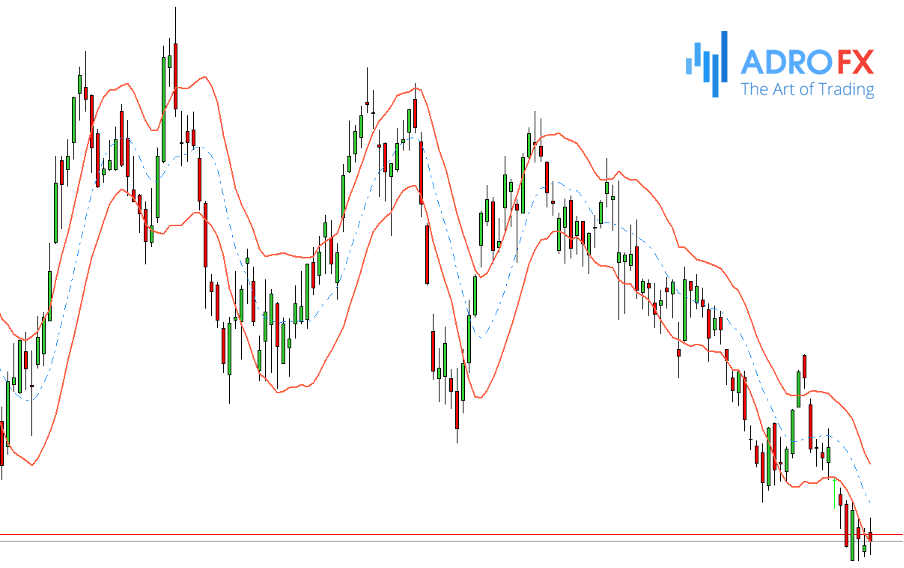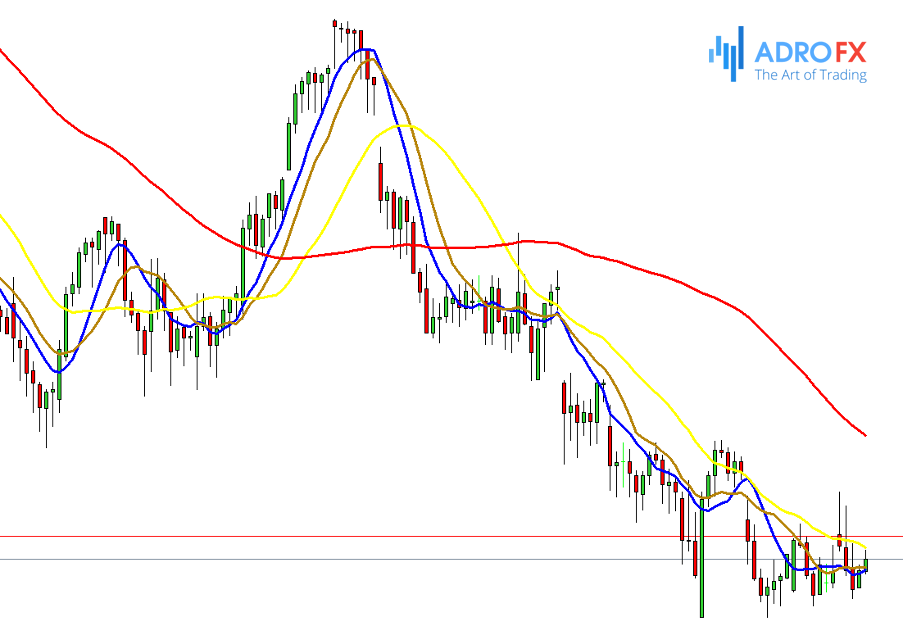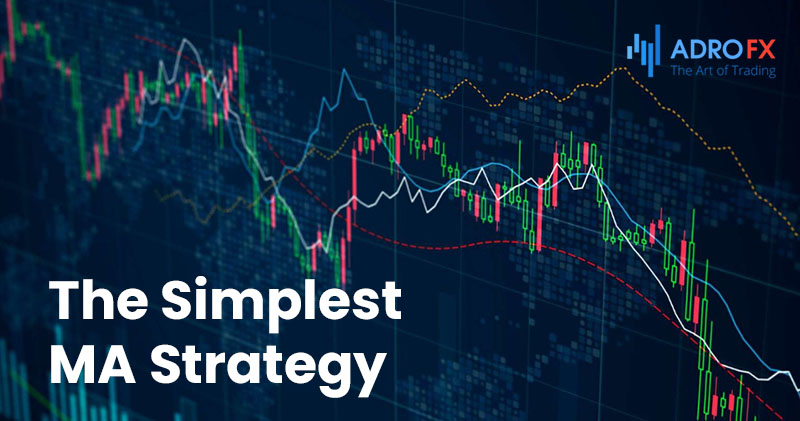Best H1 Forex Trading Strategies

The hourly time frame is one of the most popular time frames for forex trading. Even when you open a Meta Trader terminal, all of the charts are initially started on this very time frame. Hourly time frames accurately show global market trends, unlike lower intervals. It can be used for scalping trades, testing various intraday strategies, and searching for confirmation signals for market entry in time frames M30 and M15. We will consider the rules of this time frame in greater detail, as well as the appropriate indicators and strategies for it and the correct ways to analyze the chart.
H1 Time Frame and Its Characteristics

Most traders prefer to work with the H1 time frame. The signals it provides are more frequent than the ones from H4, and there is much less price noise than in M5 and M15. H1 is suitable for trading on all currency pairs. Economic news does not have a strong influence on it.
Among the advantages of the H1 time frame we can name the following:
Suitable for beginners. Price movements in the hour time frame are not as chaotic as in lower intervals. Therefore signals in H1 are rare but more accurate.
Trading does not take much time. When working with the hourly chart, there is no need to spend the whole day in front of the computer and looking for entry points. It is enough to analyze the chart only 2-3 times a day or set the audible notification of the signals in the MT4 terminal.
No swap. As a rule, trades are placed and maintained in the hourly chart during one day, and rarely roll over to the next day. This allows you to significantly save on swap.
Still, trading hourly charts has some disadvantages:
Deposit size. To receive at least a small return on the account of the trader should be several hundred dollars. If the capital management is observed, the income from such a deposit will be 20-50 dollars per day.
Rare signals. No more than 1-2 signals to open a position can be received per day. Some people find such trading boring, non-dynamic, and not very beneficial.
When trading H1, you should not enter the market an hour before the opening and an hour before the closing of the trading session of the country whose currencies you work with. For instance, you should not trade immediately after the opening and an hour before the closing of the European trading session, if you work with currency pairs, where Euro is present.
What Indicators Give the Most Accurate Signals?
Trading strategies based on key levels and patterns work well in the hourly time frame. Also, this type of chart is used in multi-time frame trading, when the market analysis is conducted at once on several time frames. So let's consider indicators that are suitable for all these purposes and will give the most accurate position opening signals.
The FXR SR Zones Indicator
The key levels on the price movement chart are called support and resistance lines. They must be drawn on price maximums and minimums. Key levels form a price channel, within which the price moves. Price may break out the channel from time to time and move out of it.
Types of levels:
- Support level. It is built on the price minimums and is the lower limit of the channel.
- Resistance level. It is plotted according to the price maximums and is the upper limit of the channel.
For automatic drawing of key levels, it is recommended to use the FXR SR Zones indicator. It not only draws the lines of support and resistance but also shows their importance.
The tool adds horizontal lines of two colors to the chart:
- Red. Resistance - resistance line.
- Blue. Support - the support line.
Next to each level, there is its description. The options are as follows:
- Weak level. It means that the price reached it only once and immediately bounced back.
- Untested. Price has only touched it once, but it was fluctuating in close proximity to it for several candlesticks.
- Verified. The price touched this level twice but has never broken out.
- Proven. The price touched it 3 or more times but did not break out.
- Turncoat. The price broke out this level by a long impulse candle.
Weak and Untested levels are weak, so you should not focus on them when placing an order.
Keltner Channel Indicator
Keltner Channel shows in what price range will be the quotes in the near future. The tool is custom, so it must be installed in the terminal separately.
Keltner Channel consists of three curved lines that overlay directly on the chart. The middle curve is the Moving Average highlighted in blue. The other two red lines are the upper and lower limits of the channel. The distance between them depends on the size of the price range.

The indicator has many settings, so it is suitable for working with different strategies. The main parameters are as follows:
- MAPeriod. This is the length of the period, the prices of which are used when calculating the channel width.
- ModeMA. Type of the central curve MA. This line can be Weighted, Exponential, or Simple MA.
- PriceType. Type of prices used in calculations. It can be closing or opening prices of candlesticks, average prices, highs, or lows.
Working with this indicator is very simple. The main strategy is to find a breakout of the upper or lower limit of the channel and open a position in the direction of the breakout.
For example:
The price has broken out the upper boundary. This is a signal to open a long position.
The price has broken out the lower line. There is a signal to open a short position
Stop Loss should be set on the line of the level opposite to the one which was broken out.
Pattern Options Indicator
Pattern Options indicator generates signals in the form of candlestick patterns - technical analysis figures. The signal looks like an arrow above or below the signal candlestick:
- If the arrow is pointing up, the indicator signals a "bullish" pattern and the need to open a buy order.
- If the arrow is directed downward, this is a sign of a "bearish" pattern and, accordingly, a signal to open a sell order.
All figures found on the chart are signed. This is very convenient, especially for those who are poorly versed in candlestick patterns.
H1 Forex Trading Strategies

There are plenty of strategies for the H1 time frame, as it is one of the most popular intervals among traders. Most of the techniques are based on trading along the trend or within the price channel, as well as on placing trades when the price reverses.
H1 Trend Strategy based on four EMAs
Let's start with the first technique, which is based on signals from the four Exponential Moving Averages - EMA (8), EMA (12), EMA (24), and EMA (72). The value of the period for each Moving Average is given in parentheses.

Strategy settings:
The time frame of the chart - H1. Currency pair - any, in which the price does not move in a narrow flat. Try to choose major assets like euro/dollar, dollar/frank, pound/dollar, or euro/yen, since their volatility is sufficiently high, hence, on their trends, you can make good money.
Add to the chart the four lines of the EMA with the periods specified above. The chart will look approximately as shown in the screenshot below:
This strategy belongs to the category of conservative, so you can put no more than 2-3% of the deposit amount per trade. The duration of a single trade may be from a few hours to a few days - depending on the duration of the price movement.
Rules for opening positions:
The trades are opened only in the direction of the main trend. The trend can be determined by the position of 8, 12, and 24 MAs relative to EMA72. If these lines are above the 72-period one, the main trend is upward. Therefore, it is necessary to trade only in the direction of an uptrend. If the lines are above the 72-period MA, then the trend is downward - here we can place only short positions.
It is necessary to open the order only under the condition that there is a trend on the market, i.e. the MAs are above or below EMA72. It is important to wait for a pullback to line EMA12 or EMA24. For example, if the trend is upward, we wait for the price to pull back to line 12 or 24, and at the point of pullback, we buy the asset. Stop Loss should be placed under the EMA24 line.
You may close a buy trade after the price has moved 20 to 40 pips in an uptrend direction. Use a Trailing Stop if you want to maximize your earnings , rather than limiting yourself to Take Profits.
For a sell order, the signals will be opposite:
EMA8, EMA12, and EMA24 MAs pass below the 72 MA.
The price makes a correction of the downtrend, pulling back to the line with a period of 12 or 24.
When the pullback occurs, near the EMA12 or EMA24 you can open a new sell order. Stop Loss should be placed outside of EMA24. A Take Profit of 20-40 pips or a Trailing Stop may be used to secure gains.
Make sure not to trade using this strategy half an hour before and after important economic news releases. At this time the chart can behave unpredictably.
H1 Forex Strategy with Stochastic and RSI
This strategy is suitable for any currency pair, whose charts show trend movements. The analysis is conducted in two time frames – four-hour and one-hour. Positions are opened in H1, in the direction of the trend of the H4 chart.
Two tools are used to search for signals Stochastic and RSI. For the RSI, leave the settings as standard – the period should be equal to 14 bars. There are two levels – 30 and 70. Set the Stochastic to 8, 3, and 3.
RSI should be added to the H4 chart. It will show the trend direction and market entry point. Stochastic is added to the H1 chart, it will confirm the RSI signals from H4.
The order to buy is opened according to the following scheme:
First, you must enable the H4 chart and wait for the candle, in which the RSI will leave the extreme oversold area, rising above the level of 30.
Once the signal is received, we switch to the H1 chart and wait for confirmation from Stochastic. Its lines should also leave the oversold zone, breaking out the level of 20 from below. At the same time, the green MA of Stochastic should be above the red - this is an additional confirmation of the signal.
A protective Stop Loss is placed in the amount of 30-35 points. The gains can be secured manually when the indicators give a signal to the contrary, or after the breakeven point to include a Trailing Stop for the position.
The sell order is placed under opposite conditions:
In the H4 chart, RSI has left the overbought area, falling below the level of 70.
We switch to H1 and wait for Stochastic to repeat the signal, having also moved out of the overbought area. Its red line should be above the green.
As soon as the signals coincide, we open a new sell trade in the H1 chart. We set the Stop Loss in the amount of 30-35 points. The gain is secured by Take Profit or Trailing Stop. Another option is to close the position manually when Stochastic or RSI shows a reverse signal.
This strategy is a conservative one. In a month it can bring about 15-25% of the return from the amount of the deposit.
Scalping Stochastic+MA Strategy
The main indicators in this strategy are Stochastic Oscillator and Exponential Moving Averages. Time frame chart - H1. The strategy belongs to the type of scalping, and intraday techniques.
Strategy settings:
The currency pair should be liquid and have medium volatility. The spread should be minimal.
To trade, add Stochastic with periods of 10 and 18 to the H1 chart, and leave the "Stochastic Slowdown" variable unchanged. Also add to the chart two EMA, calculated by close prices (Apply to Close). The period of the first line is 10, and the second - is 18. For convenience, color them in contrasting colors. Trades should be opened when the fast MA (EMA10) breaks out the slow MA (EMA18) and Stochastic confirms the signal. The direction of the breakout will determine the type of trade that can be opened.
For long positions signals will be as follows:
EMA10 has broken the EMA18 line downwards or is already above it.
Stochastic lines are also moving up.
If the signals of the indicators coincide, we open a new buy trade. Stop Loss should be placed at the level of the Min point of the previous candle.
For short positions, the signals will be opposite:
EMA10 should cross the EMA 18 from top to bottom, or already be under it.
The oscillator lines must point in the same direction as the MAs on the chart.
The protective Stop Loss for a sell order is placed at the maximum of the previous candle.
Gain in this strategy can be fixed in several ways. You can activate a Trailing Stop, but its standard value is 15 pips. If the volatility of the chart is not very high, it may not be enough. As an alternative - you can move the Stop Loss manually following the price, shifting it sideways every 10 points.
We also recommend testing trading strategies with pending orders. For example, a simple grid strategy allows you to quickly increase your deposit when trading in both low and high time frames.
The Simplest MA Strategy

Last we will tell you about the trading system based on Moving Averages. The signals of this system are indeed very simple, but quite effective.
The question of choosing the working time frame is purely individual. Let's just say that the trading system will work for any time frame, but still, it is worth looking closely at the time frames. We will consider the classical variant - H1.
There is an important feature - only those signals that were received between 7 and 15 o'clock GMT are considered to be effective.
This trading system is multi-currency. That is, it can be used to trade on any assets and instruments. Still, it is better to prefer the majors as they are more inclined to long-term trends, which is exactly what we need.
Remember also that trading signals do not appear very often, so it is worth thinking about extending the list of trading assets to all major currency pairs. This will dramatically increase your earnings.
So, trading on one currency pair will bring you about 10,000 pips on five-digit quotes for a year, which is equal to 1,000 pips on four-digit quotes. So, it's not much, but you can trade 7-8 currency pairs at once, bringing this figure to a great 8000 points a year.
The following tools are used: two Simple Moving Averages, one of 200 candles, and another one of 10 candles.
The method of drawing both - is by the closing prices of candlesticks.
This is what your terminal will look like with the instruments installed:
Signals to open long positions:
We have as many as two conditions for the opening of a long position, and we can enter the market on any of them:
The price has passed the higher (200) MA in the upward direction. We wait for the moment when the price makes a retest to the lower MA with a period of 10, and after the retest, when the price moves up again, we buy.
The price chart has settled above the slow MA (200) and started to move strongly against it, almost touching it. In this case, the fast MA with a period of 10 will be broken out, and then we just wait for the price to go up again, having bounced from the higher MA. In this case, we are following the pattern that MAs with long periods often act as support or resistance levels. Before placing a position, make sure that the quote has broken out the faster MA from the bottom up.
Setting Stop Loss:
If the price moves against us and the candle closes below the fast MA over a period of 10 candles, we will close our position.
If by the time the price falls below the fast MA, the trade will be successful, then we must move the protective order to the breakeven point.
There is also a principle - we should set the protective order at a distance of 300 points on five-digit quotes when entering the market. This is done to ensure that the trade is not knocked out at the stop by random volatility, on the one hand, and to protect the trade from a confident move of the price against us, on the other hand.
Take Profit size can be identified as follows: we use the Fibonacci Retracement, stretch it over the movement that has occurred from the moment the trend begins (last global extremum) to the moment the price breaks out the higher (200) MA, and place our Take Profit order at the level of 161.
Signals to open short positions:
We place a sell trade under either of two conditions:
- The price has passed the higher (200) MA from top to bottom. We wait for the moment when the price makes a retest to the lower MA with a period of 10, and after the retest, when the price moves down again, we enter the market.
- The price chart has settled below the slow MA (200) and started to move strongly against it, almost touching it. In this case, the fast MA with a period of 10 will be broken out, and then we just wait for the price to go down again, breaking out from the higher MA. Only beforehand it is important to make sure that the price has broken out the lower MA from above downwards.
The rules of setting Stop Loss are simple. If the price goes against us, and at the same time the price has closed below the fast MA with a period of 10, then we simply close the position. If by the time the price falls below the fast MA, the trade will be successful, then we need to move the protective order to the breakeven point.
The Take Profit size is identified in the same way as for the previous trade.
Summary
So, that was our review of simple and understandable for every trader (even for beginners) trading systems designed for trading on the hourly chart. Remember to strictly follow the rules of capital management and risk management. This will help you not to lose all your funds in a heartbeat and stay afloat in those moments when the strategy gives a series of losses (this, alas, is inevitable in any trading strategy). Good luck!
About AdroFx
Being a well-established brokerage company, AdroFx offers the best trading conditions to its clients from 200 countries. Founded by experts with a couple of decades of overall experience, AdroFx is one of the best platforms on the market for shares trading. Either a newbie or experienced trader, both will find here what they are looking for since the company provides various trading accounts for different trading styles and goals.









